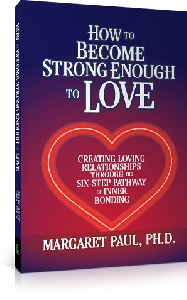"Attachment and Flight"
By Sheryl PaulFebruary 25, 2011
Most people, whether dating, engaged, or in a long-term relationship, struggle with the balance of intimacy and separateness. Many attribute the challenge to a fear of intimacy, but in this article I explore another reason.
"Something valid and necessary takes flight when it senses deep attachment, and this flight also seems so deeply rooted as to be an honest expression of soul. Our ultimate goal is to find ways to embrace both attachment and resistance to attachment, and the only way to that reconciliation of opposites is to dig deeply into the nature of each. As with all matters of the soul, it is in honoring its impulses that we find our way best into it mysteries." - Thomas Moore, Soul Mates: Honoring the Mysteries of Love and Relationships, p. 3
A few nights ago, as I waited for my husband to finish putting our son to bed so we could have a much-needed movie date night, I glanced over at the bookshelf and noticed Thomas Moore's book. It's been years since I've read it, and I'm not even sure I ever read it in its entirety. Sometimes books wait for the right moment to make themselves known and it seems to be then, by some divine mystery, that they scoot their way to the edge of the shelf and insinuate themselves into our hands. So it was last week when Soul Mates jumped out at me and I started to read.
By page three I could see why: the book explains precisely what my clients struggle with on the precipice of marriage. Just as they're about to make the biggest commitment and attachment of their life, something inside resists the attachment and longs to take flight. Most people explain this desire for flight in psychological - and somewhat pathological - terms as a fear of intimacy. While I'm sure fear plays a role in the need for separateness, when we observe this tendency in terms of the needs of the soul, it takes on a different flavor. Pathologizing the fear assumes that there's something wrong; viewing the reaction as "an honest expression of soul" assumes that everything is right, normal, and as it should be.
But it's not only my clients who struggle with the dichotomy of attachment and flight. That night, I read and waited for my husband. The minutes turned into an hour and still I waited. I was excited about our date as we rarely spend quality alone time together; the passage of time only increased my anticipation. But when he finally entered the room, something inside of me retreated. The retreat was subtle and probably unnoticeable by him as I've learned not to act on the impulse to withdraw. Instead, I moved toward him, honoring the greater part of me that was looking forward to our time together.
Having just read Moore's interpretation of this retreat from attachment as a genuine need of the soul, I observed it from a different, and more compassionate, vantage point. Instead of thinking, "Oh, here's fear again," I thought, "Hmmm, here's the soul's need for separateness just as I'm about to engage in togetherness." The resulting action - moving toward him instead of away from him - is the same regardless of how I interpret the emotional response, but the feeling inside is different. When I understand the desire for flight only as fear, it creates a judgmental and antagonistic internal response. But when I understand it as "an honest expression of soul", I move toward it with compassion and curiosity. It's in this embrace of "what-is" that the soul feels honored and the tension of opposites moves toward authentic resolution.
Clearly, the need for flight and separateness doesn't only appear during the intensity of an engagement. If you're in a long-term relationship or marriage, you know that the desire for deeper levels of attachment and intimacy interweave throughout the years with a desire for separateness and silent retreat. In a nutshell, it could be said that marriage is this dance of togetherness and separateness, a perpetual ebb and flow of learning to balance the needs for self with the needs to connect with other. It's not an easy dance, and it's certainly complicated when the needs of each spouse differ (i.e. one has a greater need for connection and the other a greater need for separateness). But the Jungian way is not to pathologize these needs but rather to view them as necessary soul expressions that ask only that we see them through the lens of tolerance, curiosity, and finally, always, with love.
 Send this article to a friend
Send this article to a friend  Print this article
Print this article  Bookmarked 2 time(s)
Bookmarked 2 time(s)
| Related Articles |
|---|
| What Really Creates Emotional Intimacy |
| Keeping Love Alive |
| Relationships and Emotional Connection |
| Time for Connection |
Comments
| Author | Comment | Date |
|---|---|---|
| Join the Inner Bonding Community to add your comment to articles and see the comments of others... | ||

Daily Inspiration
Judgments, whether toward yourself or others, often create resistance. Others pick up your judgmental energy even if you don't say anything. Today, notice your judgmental thoughts and replace them with kind, compassionate thoughts.
By Dr. Margaret Paul

 Share with Del.icio.us
Share with Del.icio.us Share with Digg
Share with Digg







